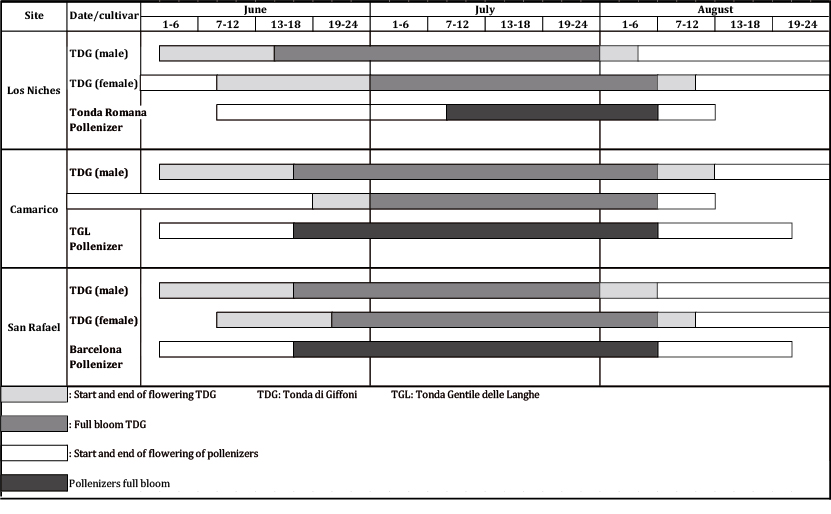Phenology, pollen synchronization and fruit characteristics of european hazelnut (Corylus avellana L.) cv. tonda de Giffoni in three sites of central Chile
Palabras clave:
avellano, horas frío, días grado, compatibilidad polínicaResumen
Phenology, pollen synchronization and fruit characteristics were studied during the season 2011-2012 for European hazelnut (Corylus avellana L.) cv. "Tonda di Giffoni" and three of its pollinizers ("Tonda Romana", "Tonda Gentile delle Langhe" and "Barcelona") in three agro-ecological conditions of central Chile. Male and female blooms occurred from June through August, with a flowering span ranging between two to two and a half months depending on the cultivar, pollinizer and study sites. "Tonda di Giffoni" male flowering onset occurred during the first week of June, up to two weeks earlier than female flowers (271 to 417 chilling hours) showing a marked protandrus dichogamy. "Tonda Gentile delle Langhe" and "Barcelona" pollinizers completely covered the female flowering period of "Tonda di Giffoni", while "Tonda Romana" fail to cover the first flowering week. In general, starting dates for the different phenological stages were directly and significantly (P<0.05) correlated with chilling hour accumulation and growing degree days. Fruit set (34.1%) and maximum fruit diameter (16.6 mm) were significantly lower in the case of "Tonda Gentile delle Langhe" compared to "Tonda Romana" (82.2%, 17.3 mm) and "Barcelona" (74.7%, 17.4 mm).
Descargas

Descargas
Publicado
Cómo citar
Número
Sección
Licencia
Aquellos autores/as que tengan publicaciones con esta revista, aceptan las Políticas Editoriales.










.jpg)




